Related Research Articles

Frank Lloyd Wright was an American architect, designer, writer, and educator. He designed more than 1,000 structures over a creative period of 70 years. Wright played a key role in the architectural movements of the twentieth century, influencing architects worldwide through his works and hundreds of apprentices in his Taliesin Fellowship. Wright believed in designing in harmony with humanity and the environment, a philosophy he called organic architecture. This philosophy was exemplified in Fallingwater (1935), which has been called "the best all-time work of American architecture".
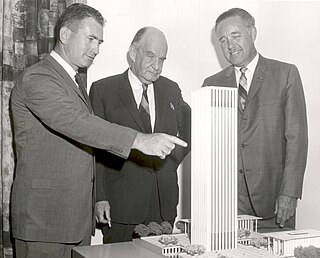
Edward Durell Stone was an American architect known for the formal, highly decorative buildings he designed in the 1950s and 1960s. His works include the Museum of Modern Art, in New York City, the Museo de Arte de Ponce in Ponce, Puerto Rico, the United States Embassy in New Delhi, India, The Keller Center at the University of Chicago, and the John F. Kennedy Center for the Performing Arts in Washington, D.C.

Modern architecture, or modernist architecture, was an architectural movement or architectural style based upon new and innovative technologies of construction, particularly the use of glass, steel, and reinforced concrete; the idea that form should follow function (functionalism); an embrace of minimalism; and a rejection of ornament. It emerged in the first half of the 20th century and became dominant after World War II until the 1980s, when it was gradually replaced as the principal style for institutional and corporate buildings by postmodern architecture. According to Le Corbusier the roots of the movement were to be found in the works of Eugène Viollet le duc.
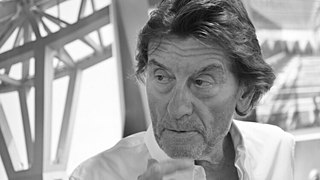
Helmut Jahn was a German-American architect, known for projects such as the Sony Center on Potsdamer Platz in Berlin, Germany; the Messeturm in Frankfurt, Germany; the Thompson Center in Chicago; One Liberty Place in Philadelphia, Pennsylvania; and Suvarnabhumi Airport, in Bangkok, Thailand, among others.

Chaudhry Muhammad Ali, best known as Muhammad Ali, was a Pakistani politician and statesman who served as the fourth prime minister of Pakistan from August 1955 till his resignation in September 1956. His government transitioned Pakistan from a British Dominion to an Islamic Republic.
Constantinos A. Doxiadis, often cited as C. A. Doxiadis, was a Greek architect and urban planner. During the 1960s, he was the lead architect and planner of Islamabad, which was to serve as the new capital city of Pakistan. He was later known as the father of ekistics, which concerns the multi-aspect science of human settlements.

Frank Lloyd Wright Jr., commonly known as Lloyd Wright, was an American architect, active primarily in Los Angeles and Southern California. He was a landscape architect for various Los Angeles projects (1922–1924), provided the shells for the Hollywood Bowl (1926–1928), and produced the Swedenborg Memorial Chapel at Rancho Palos Verdes, California (1946–1971). His name is frequently confused with that of his more famous father, Frank Lloyd Wright.
Michael Scott was an Irish architect whose buildings included the Busáras building in Dublin, Cork Opera House, the Abbey Theatre and both Tullamore and Portlaoise Hospitals.

William Leonard Pereira was an American architect from Chicago, Illinois, who was noted for his futuristic designs of landmark buildings such as the Transamerica Pyramid in San Francisco. Remarkably prolific, he worked out of Los Angeles, and was known for his love of science fiction and expensive cars, but mostly for his unmistakable style of architecture, which helped define the look of mid-20th century America.

The Narendra Modi Stadium, also known as Motera Stadium, is an international cricket stadium in Ahmedabad, Gujarat, India. It is the largest stadium in the world, with a seating capacity of 132,000 spectators. The stadium is owned by the Gujarat Cricket Association and serves as the venue for domestic and international cricket matches. It is one of the world's premier cricket stadiums.
Philip Leonard Rhodes (1895–1974) was an American naval architect known for his diverse yacht designs.

Abdur Rahman Chughtai was a Pakistani painter, artist, and intellectual from Punjab, who created his own unique, distinctive painting style influenced by Mughal art, miniature painting, Art Nouveau and Islamic art traditions. He is considered to be 'the first significant modern Muslim artist from Pakistan', and the national artist of Pakistan.
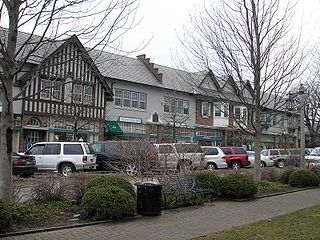
Howard Van Doren Shaw AIA was an architect in Chicago, Illinois. Shaw was a leader in the American Craftsman movement, best exemplified in his 1900 remodel of Second Presbyterian Church in Chicago. He designed Marktown, Clayton Mark's planned worker community in Northwest Indiana.

Junaid Jamshed Khan was a Pakistani singer-songwriter, television personality, fashion designer, actor, and preacher. Jamshed first gained nationwide and international recognition as the vocalist of Vital Signs. Their 1987 album, Vital Signs 1 included the hit singles "Dil Dil Pakistan", and "Tum Mil Gaye". The commercial success of the album helped develop Pakistan's rock music industry.

Amjad Islam Amjad, PP, Sitara-e-Imtiaz was a Pakistani Urdu poet, screenwriter, playwright and lyricist.

Prithipal Singh was an Indian field hockey player who played as a halfback. He was a member of the India national team that won a gold medal at the 1964 Tokyo Olympics, and silver and bronze at the 1960 Rome Olympics and bronze at the 1968 Mexico Olympics respectively.
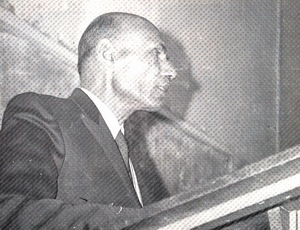
Rafi Muhammad Chaudhry FPAS HI, NI, SI, Skdt best known as R. M. Chaudhry, was a Pakistani nuclear physicist and a professor of particle physics at the Government College University. His teaching and instructions on modern physics influenced many of his student to pursue career in physics who regard him as one of the key architects of having been the pioneer of experimental nuclear physics research in Pakistan and, along with Abdus Salam and Ishrat Hussain Usmani, one of the main creators of Pakistan's nuclear weapons research program in the 1970s. Chaudhry, who served as professor of nuclear physics at Government College University, was later referred to by Dr. Samar Mubarakmand, one of his students, as "the true father of the nuclear weapons program of Pakistan".
Naushad N. Merali, CBS was the founder of the Kenyan mobile service provider Kencell along with French media giant Vivendi. Merali became famous in an almost folk tale for a corporate boardroom manoeuvre that earned him a $20million dollar profit in one hour thanks to pre-emptive rights of his stake in private Telecom company Kencell Kenya in 2004. He attended Highway Secondary School in the suburbs of Nairobi, Kenya. As one of Kenya's leading industrialists, Merali brought commercial development in Kenya for more than 30 years and was constantly expanding his businesses throughout East Africa.
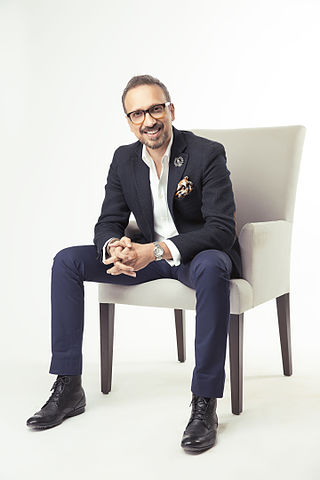
Asim Raza is a Pakistani film and television commercial director and producer. Asim began his career as an architect and worked with the architectural firm Arshad Shahid Abdullah (PVT) LTD before venturing into film production and direction. He made his debut as a film maker in the mid-90s, he worked in all visual mediums from TV commercials to music videos, long plays and feature films. In 2004, Asim won the Lux Style Award for Best Music Video Director for "Mahi Ve". In 2013, Asim directed a television film, Behadd which won the Hum Award for Best Television Film. Asim marked his feature film debut with a coming-of-age drama Ho Mann Jahaan, Asim Raza owns a production company called The Vision Factory.
Chaman Nahal commonly known as C Nahal, also known as Chaman Nahal Azadi, was an Indian born writer of English literature. He was widely considered one of the best exponents of Indian writing in English and is known for his work, Azadi, which is set on India's Independence and her partition. He is also known for his depiction of Mahatma Gandhi as a complex character with human failings.
References
- ↑ Mankani, Zain. "An exclusive interview with Arch. Pyarali Merali". Archi Times. Retrieved 20 October 2016.